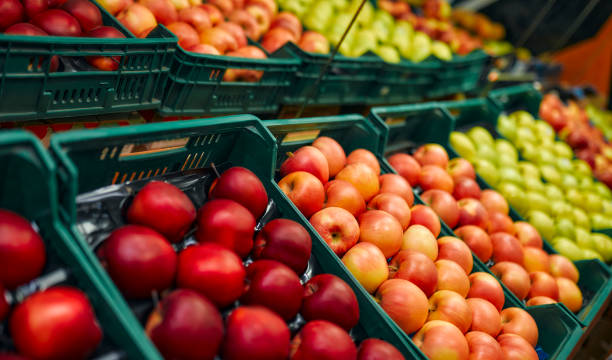By: Sahra Mohamed
Gentrification in urban neighborhoods affects both communities and the food industry. As property values and rents rise, low-income residents are displaced to make room for wealthier individuals and new commercial developments. Local businesses and grocery stores are replaced by more expensive restaurants and fast-food chains. Residents find themselves with fewer healthy food options, relying on convenience stores or fast food outlets. This reduces access to affordable, nutritious food, contributing to the growing obesity crisis in North America.
In Canada, the rising cost of living has made matters worse, placing more financial strain on families. Recent data shows that grocery prices will continue to rise due to inflation and new tariffs on imports from Mexico and the U.S. As a result, many Canadians adjusted their shopping habits. In a story posted in The Guardian, a pizzeria owner in Toronto decided to boycott U.S. ingredients in response to proposed tariffs, highlighting the impact these policies have on businesses and consumers.
According to Statistics Canada, single-parent households make up approximately 25% of families with children in Canada. These families are vulnerable and will be most affected by rising food prices. Millions of Canadians, including children, experience food insecurity, with single-parent families being disproportionately affected. A 2024 report by Feed Ontario, reveals that a large portion of the population relying on food banks consists of single-person households. Food prices are projected to increase by 3% to 5%, which will strain budgets for those already facing financial constraints. This information is supported by data from the Canadian government.
The tariffs on imported goods, such as dairy, poultry, and eggs, worsen the financial burden on Canadian families. These tariffs have led to higher prices for everyday food items. The dairy supply management system in Canada, which includes tariffs on imports, has been criticized for driving up the cost of dairy products. According to the Conference Board of Canada, Canadian households pay about $276 more annually for dairy products compared to households in other countries. Beef prices are also expected to rise as Canadian ranchers reduce cattle herds due to concerns over U.S. tariffs, as reported by Reuters
To tackle these challenges, some businesses have introduced innovative pricing models to make healthy food more accessible. For example, Everytable, a company based in Los Angeles, adjusts its meal prices based on the neighborhood’s income level. In wealthier areas, meals are priced higher, while in lower-income areas, the prices are lowered to make nutritious meals more affordable. This strategy helps provide healthier food options to underserved communities and addresses rising food costs in gentrifying areas.
The effects of gentrification, tariffs, and rising living costs have made it more difficult for Canadian families, including single-parent households, to access healthy, affordable food. While companies like Everytable offer innovative solutions through their pricing models, addressing this issue requires more action from the Canadian government. Improving food literacy, supporting community initiatives, and implementing public food policies are important steps toward ensuring that nutritious food is accessible to all Canadians, regardless of income level or neighborhood.



Leave a Reply